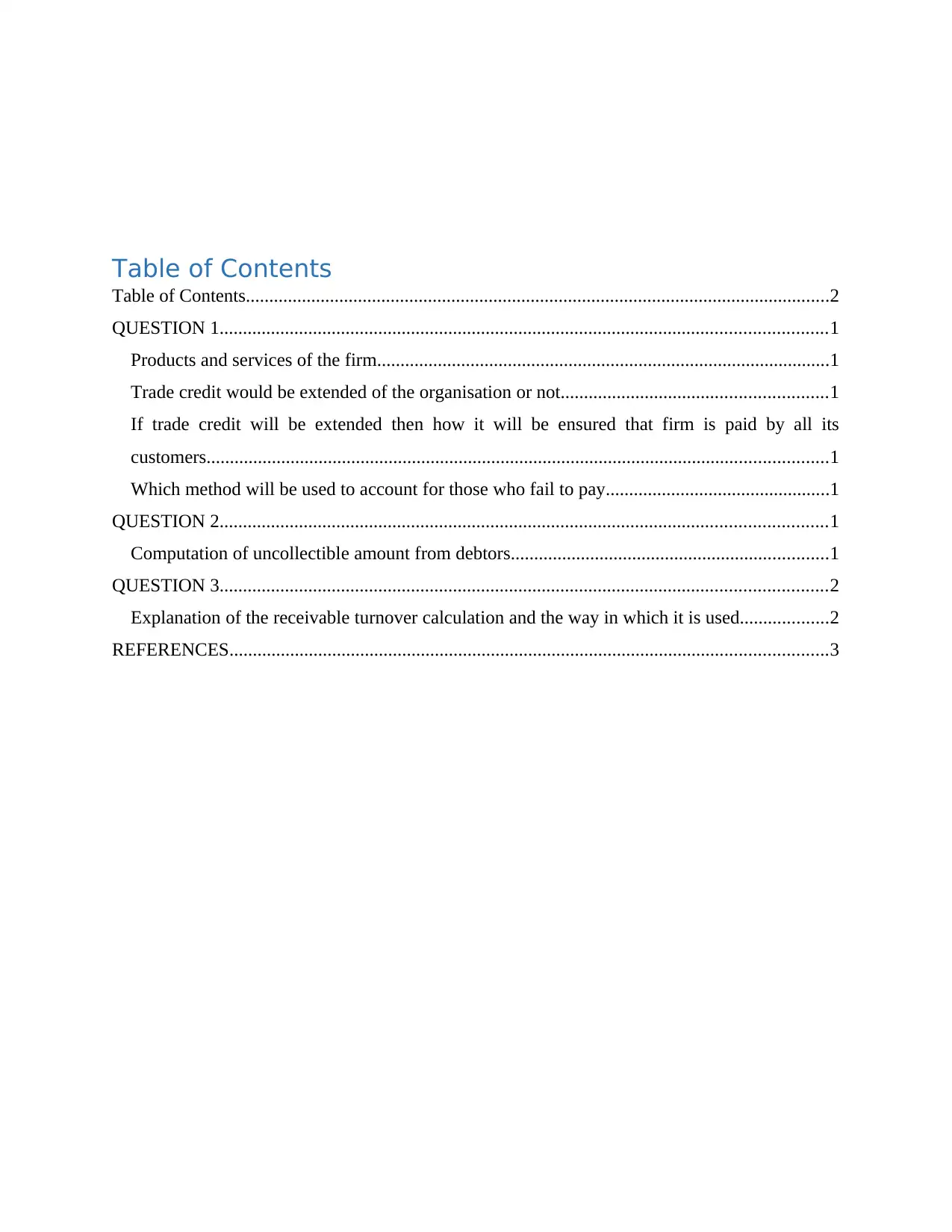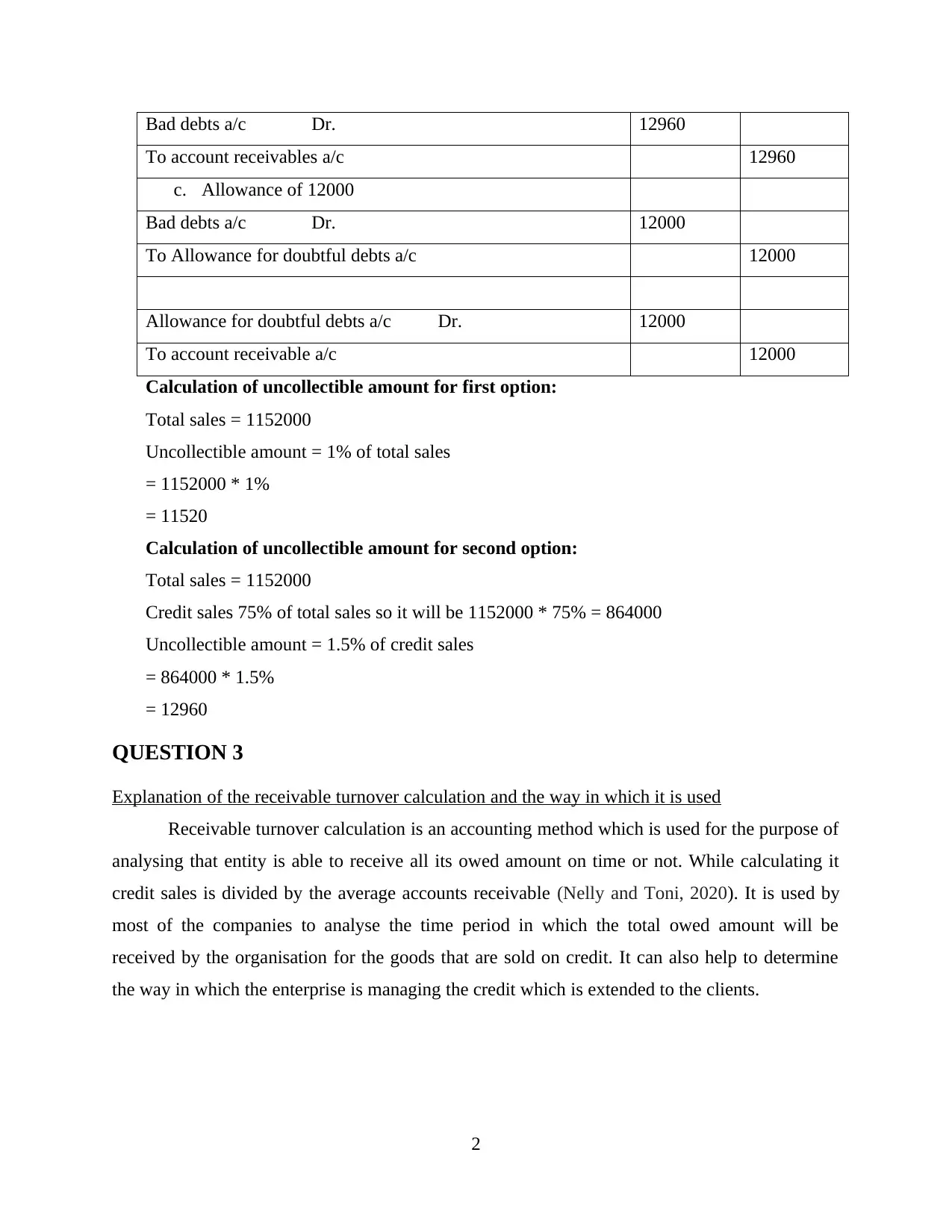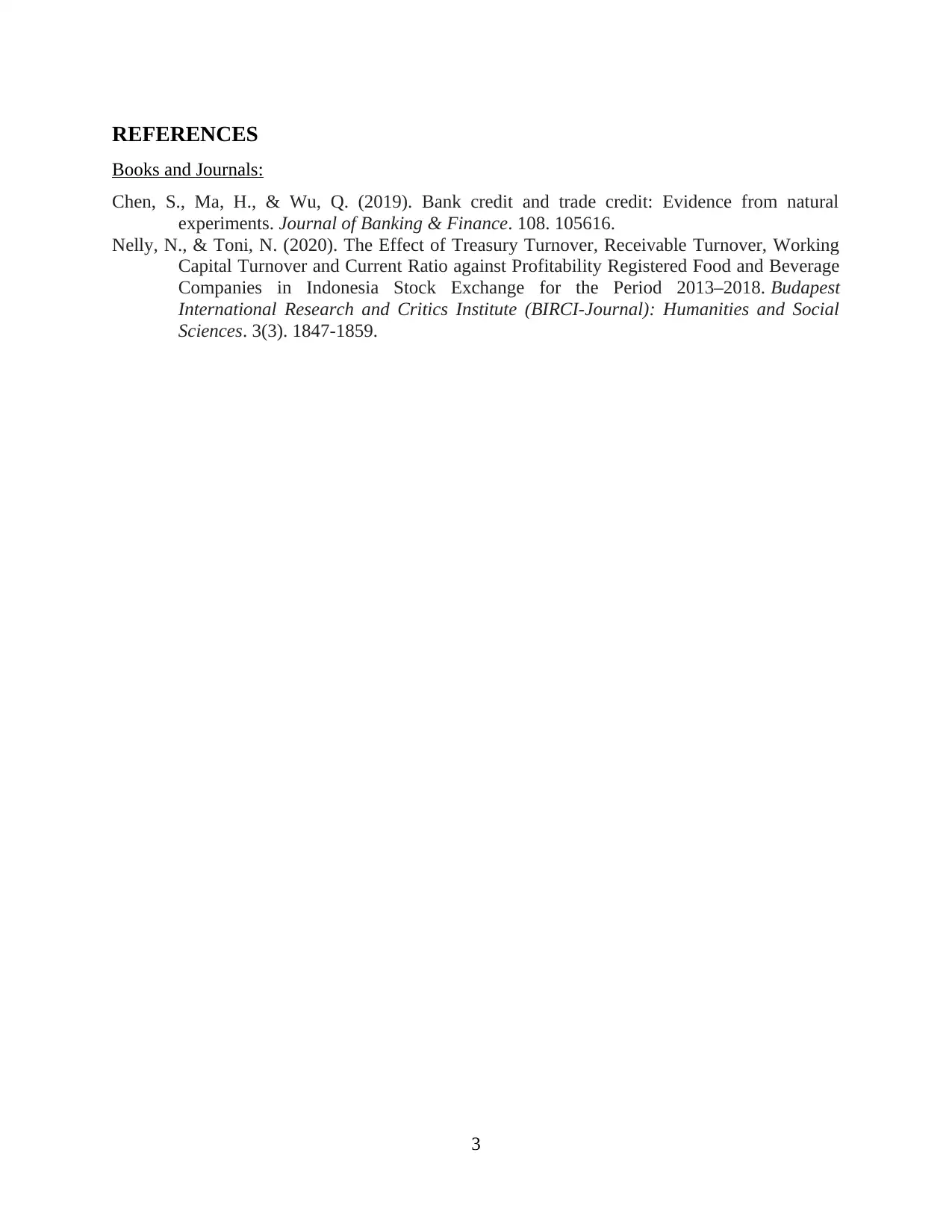Finance Assignment: Waitrose Credit and Receivables Analysis
VerifiedAdded on 2023/01/09
|5
|773
|94
Homework Assignment
AI Summary
This finance assignment solution addresses key concepts in financial accounting and credit management. Question 1 explores the extension of trade credit, considering the products and services of a firm (Waitrose Limited), the rationale behind offering credit, its impact on sales and profits, and methods to ensure customer payments. It also covers accounting methods for uncollectible accounts. Question 2 involves the computation of uncollectible amounts from debtors using different approaches, including journal entries, and calculating uncollectible account expense based on a percentage of sales and credit sales, as well as considering the balance in allowance for doubtful accounts. Question 3 explains the calculation and use of receivable turnover, an accounting method used to analyze a company's efficiency in collecting its receivables and managing credit extended to clients. The solution provides detailed calculations and explanations, supported by references to relevant literature.
1 out of 5











![[object Object]](/_next/static/media/star-bottom.7253800d.svg)